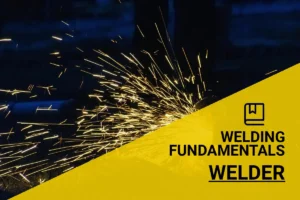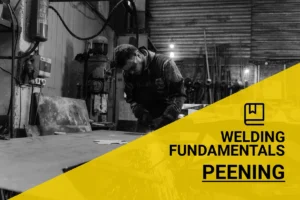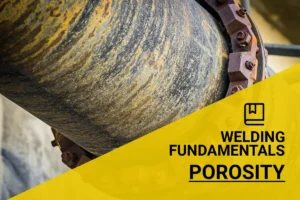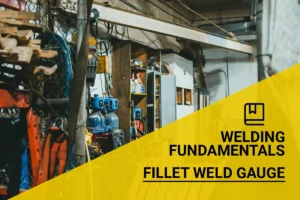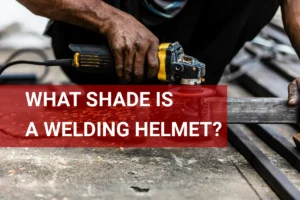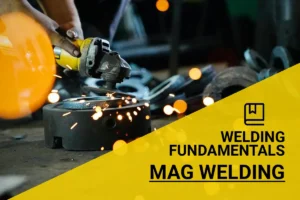What is Pulse Welding? A Guide to Its Process, Types, and Applications
Published on: March 22, 2025 | Last modified: March 4, 2025
By: Joe Carter
Pulse welding is an advanced technique used in various welding processes. It delivers consistent heat while minimizing distortion, which is crucial for high-quality welds.
I often used to be asked what is pulse welding? It’s essential because it allows for precision in welding. From my experience, using pulse methods has helped in difficult joints where conventional welding failed to achieve a strong bond.
In this article, I’ll cover how pulse welding works, the different types like pulse MIG and pulse TIG, necessary steps for effective pulse welding, factors that impact the process, common issues, aftercare tips, applications in industries, and alternatives to pulse welding.
Contents
- What is Pulse Welding?
- How Does Pulse Welding Work?
- Types Of Pulse Welding
- Advantages of Pulse Welding
- Steps for Pulse Welding
- Factors Affecting Pulse Welding
- Common Issues You Might Encounter
- Industry Applications for Pulse Welding
- Exploring Alternatives to Pulse Welding
- Frequently Asked Questions (FAQs)
- Conclusion
- Additional Reading
What is Pulse Welding?
It’s a welding technique that alternates between high and low heat. This allows for better control and minimized distortion on thin materials. Commonly used in manufacturing, aerospace, and automotive industries due to its versatility and efficiency.
How Does Pulse Welding Work?
Pulse welding is a technique that controls the arc with pulses of current. Instead of a steady flow of power, the welder uses short bursts or pulses. This method helps manage heat and reduces distortion. For example, a pulse MIG welder can produce up to 120 pulses per second, improving the quality and speed of the weld.
Pulse welding achieves better penetration and a cleaner weld bead. The pulse repetition balances heat input and weld quality, resulting in excellent outcomes, especially with thin materials. This method is ideal for welding aluminum and stainless steel.
Using pulse welding has its advantages. I’ve found that welds are smoother and often need less cleanup. It’s particularly effective with a pulse MIG welder, which delivers consistent results every time.
Types Of Pulse Welding
What are the different types of pulse welding?
-
Capacitive Discharge Welding
This method uses stored electrical energy to create a weld. Capacitive discharge welding involves rapidly discharging high voltage to melt the workpieces in short bursts. The welder charges a capacitor and releases the energy, creating a quick single pulse of heat. If you are interested in understanding the costs associated with welding materials, you may find detailed information on the pricing of welding rods.
.
-
High-frequency Pulse Welding
This technique uses high-frequency currents for welding, allowing tighter control over heat inputs in the weld area. You apply rapid pulses through the workpieces, resulting in minimal distortion and a strong weld seam. Beginners can efficiently start welding with easy methods.
-
Laser Beam Pulse Welding
Laser beam pulse welding melts metal with focused laser beams. It’s precise and efficient for fine applications. You focus a pulsed laser onto the joint, instantly creating molten metal that solidifies to form the bond. For those interested in alternative methods, explore how to make a welding machine with a 12v battery.
-
Micro-pulse Welding
This type uses very small heat inputs for delicate assemblies. Micro-pulse welding suits tiny parts or thin materials that require precision. You apply pulses of energy in a controlled manner, melting just enough material for a clean joint.
-
Ultrasonic Pulse Welding
This welding process uses high-frequency ultrasonic sound waves. It’s ideal for joining plastics or thin sheets. You apply the ultrasonic waves to the workpieces while simultaneously applying light pressure, creating a strong weld. To ensure the quality of ultrasonic welding, understanding what materials go into welding rods is essential.
We covered the various types of pulse welding here. Next, we will cover the advantages of pulse welding.

Advantages of Pulse Welding
Let’s dive into the benefits of pulse welding that set it apart from regular welding methods.
| Advantage | Description | Impact |
|---|---|---|
| Reduced Thermal Distortion | By controlling heat input with pulses, pulse welding minimizes the heat-affected zone (HAZ). | This keeps the surrounding material from warping or degrading. |
| Improved Penetration | Pulses can enhance penetration depth without excessive heat. | Perfect for working with thicker materials, achieving strong joints. |
| Better Control | Pulse welding provides more control over the weld bead. | The result? Smoother and more aesthetically pleasing finishes. |
| Versatility | Adapts well to different materials and thicknesses, including aluminum and stainless steel. | This flexibility expands its use across various industries. |
| Less Cleanup | Pulse welding typically produces less spatter than other methods. | This means less time spent grinding and cleaning up afterwards. |
That covers the benefits of pulse welding. Let’s now take a look at the process involved in pulse welding.
Steps for Pulse Welding
Here are the steps to effectively perform pulse welding.
-
Select Your Pulse Welding Settings
Set your machine’s parameters first. For pulse MIG, use a duty cycle of about 30-70% and an average voltage of 20 to 25 volts to create stable arcs. Adjust the pulse frequency to 0.5 to 5 Hz for smooth welding.
Your wire feed speed should range from 3.5 to 6.5 meters per minute (11.5 To 21.3 Ft/min), depending on material thickness and type. Don’t overlook your shielding gas; a mixture of 75% Argon and 25% CO2 works well for most mild steel applications.
-
Prepare Your Workpiece
Clean the surfaces of your workpieces thoroughly. Remove all rust, oil, and oxide layers for a strong bond. Use a grinder or wire brush to achieve clean metal. Establish a solid connection for strong welds without contaminants.
Choosing the right welding equipment can greatly influence the quality of your projects, especially at home. For those looking to make informed decisions on their tools, understanding the best welding machine for home use can be crucial.
Position the workpieces correctly, ensuring they meet at the right angle for the joint type you’re welding. For further assistance on best practices, review the welding guidance on maintaining a gap of about 1.5 to 2 mm (0.06 to 0.08 inches) between pieces for proper penetration. I once made this mistake, and it cost me a lot of rework!
Ensure you’re familiar with edge joint welding techniques to achieve the best results.
-
Initiate the Weld
Start the pulse welding process by making proper contact with the weld start. Move your gun smoothly at a consistent speed to avoid overheating. For most joints, a travel speed of about 300 to 600 mm/min (11.8 To 23.6 In/min) works well.
Maintaining a steady hand is key. If you feel the heat building up too fast, slow down your movement. This early arc ignition gives you control and maintains a cleaner bead.
-
Control the Pulse Characteristics
Be mindful of pulse timing as you weld. The pulse should have consistent peaks and valleys for proper penetration. A peak for 0.2 seconds, followed by a 0.8-second drop, usually provides a well-defined bead. If you’re deciding on the appropriate current settings, knowing how many amps for a 3/32 welding rod is crucial for optimal results.
.
Adjust these timings based on metal thickness and type, particularly for aluminum versus steel. The more you practice, the smoother your beads will look. Less cleanup means more time for new projects!
-
Review Your Weld Bead
After completing the weld, inspect your bead closely. Look for even height and consistent width; these factors indicate good penetration and bonding. An ideal weld bead should be smooth with minimal spatter.
If things didn’t go as planned, don’t stress. Check your settings and speed. Every weld can teach you something, so take notes and improve for next time.
You should now have a good understanding of the pulse welding process, techniques, and equipment. In the next part, we’ll discuss the factors influencing pulse welding.
Factors Affecting Pulse Welding
What factors influence pulse welding effectiveness?
-
Material Thickness
Material thickness directly affects heat input. Materials thicker than 5 mm (0.2 In) require higher heat levels to ensure penetration and fusion.
-
Pulse Duration
Pulse duration impacts the arc’s heating and cooling cycle. Shorter pulses minimize heat-affected zones, while longer pulses increase penetration depth, up to 20 ms in some cases.
-
Welding Speed
Welding speed is crucial. Faster speeds can reduce heat input, affecting bead shape and penetration. Finding the optimal speed is essential.
-
Electrode Configuration
Electrode configurations, such as pointed versus flat tips, influence arc stability and shape. A tilted electrode can deepen penetration but may distort bead width.
-
Cooling Rate
The cooling rate alters the metal’s microstructure. Faster cooling typically results in finer grains, enhancing strength, particularly in materials like stainless steel.
We covered the elements influencing pulse welding processes. Next, we will discuss common challenges you may face.
Common Issues You Might Encounter
Let’s look at problems related to pulse welding.
-
Poor Fusion
Pulse welding can lead to poor fusion if settings aren’t calibrated. Check the voltage (Typically 18-28 V) and travel speed. To resolve it, adjust the heat input and arc length, and test with control specimens. Understanding different parameters like arc stability is crucial for mastering MIG welding intricacies, and you can find more about arc control on a MIG welder.
-
Electrode Wear
Pulse welding can accelerate electrode wear. Monitor the EJ12 or E3 tungsten closely. To fix this, regularly replace or sharpen electrodes and check for overheating. Consistency is crucial!
-
Inconsistent Heat Input
Pulse welding can cause inconsistent heat input. If anomalies occur, use a thermal camera to measure the weld zone. Stabilize the pulse rate, reducing it from 150 to 100 pulses per second (PPS) if inconsistencies appear.
-
Excessive Spatter
Pulse welding often causes excessive spatter due to uneven amperage settings. To reduce it, fine-tune your parameters, lowering amperage from 230 A to 200 A while adjusting wire speed.
-
Distortion Of Materials
Distortion can occur during pulse welding. To check, visually inspect the base material and measure warpage exceeding 1 mm. Reduce welding time per joint and consider preheating metals when applicable.
Industry Applications for Pulse Welding
I’ve seen pulse welding excel in niche production fields. It has many applications, such as:
- Aerospace Components: Used for high-strength welds on lightweight materials. Pulse welding minimizes warping, which is essential for maintaining structural integrity. It’s popular for titanium and aluminum.
- Automotive Manufacturing: Ideal for joining thin sheet metals. It improves productivity while reducing heat input, enhancing quality. It’s becoming a go-to for welding car bodies.
- Medical Device Fabrication: Critical for joining components like surgical tools. Precision is vital, and pulse welding provides clean, controlled spots without damaging sensitive parts.
- Electronics Enclosure Welding: Used for cases that protect electronics. It’s favored for creating strong yet discreet welds that shield components without excessive heat.

Exploring Alternatives to Pulse Welding
When you want to achieve similar outcomes as pulse welding, consider techniques like TIG welding or MIG welding. TIG (Tungsten Inert Gas) offers precision, especially on thin materials. MIG (Metal Inert Gas), especially double pulse MIG welding, might be preferred in heavy industries for speed and efficiency.
From my unique perspective, I’ve noticed that each method has its strengths. For instance, pulsed MIG welding is often chosen for its less spatter and better control. If you’re working on projects needing fine details, understanding welding fundamentals could do the trick with ease.
When considering equipment for specific applications like pipeline construction, discovering the best welding machine for pipeline can significantly enhance your workflow.
Frequently Asked Questions (FAQs)
We have covered some common inquiries about pulse welding. I typically get asked these questions:
What Does a Pulse Welder Do?
A pulse welder is a machine that performs welding using a pulsing technique. This method enhances control over heat input, leading to better penetration and less distortion. It’s particularly useful for thin materials, improving accuracy in delicate welding jobs.
What is the Difference Between Pulse Welding and MIG Welding?
The difference between pulse welding and MIG welding lies in their techniques. While MIG welding provides a constant current, pulse welding alternates between high and low current settings. This results in more precise control and minimizes burn-through on thin metals.
What Are the Disadvantages Of Pulse Welding?
The disadvantages of pulse welding include higher equipment costs and a steeper learning curve. Pulse welders can be pricier, often starting at $1,500, compared to basic MIG welders. Additionally, mastering the equipment requires practice, especially for beginners.
What is the Advantage Of Pulse TIG Welding?
The advantage of pulse TIG welding is improved control over heat input. This technique prevents overheating, allowing for precise welding on thinner materials. The variable settings can boost weld quality significantly, making it ideal for intricate jobs and metal types.
What is Double Pulse MIG Welding?
Double pulse MIG welding is a technique that utilizes two pulsing cycles within each weld. This feature delivers better heat control and penetration than standard pulsed welding. Adjusting the peaks and valleys of each pulsing cycle reduces spatter and improves bead shape.
Conclusion
That’s everything I wanted to share with you about pulse welding. We covered what it is, how it works, various types, and important steps for effective techniques. Additionally, we discussed factors affecting pulse welding, common issues, aftercare tips, and real-world applications.
Hopefully, I was able to impart some of my experience on what pulse welding is all about. In simple terms, pulse welding mixes high and low current for better control, reducing heat and enhancing weld quality. With techniques like pulse MIG, pulse TIG, and a focus on safety and precision, pulse welding stands out as a versatile and efficient method in many industries.
For more expert insights and guidance on welding practices, feel free to visit What is Welding.
Additional Reading
- American Society of Mechanical Engineers. (2019). ASME Section IX: Welding and Brazing Qualifications. New York, NY: ASME.
- International Organization for Standardization. (2017). ISO 3834: Quality Requirements for Fusion Welding of Metallic Materials. Geneva, Switzerland: ISO.
- Occupational Safety and Health Administration (OSHA): Welding, Cutting, and Brazing: https://www.osha.gov/welding-cutting-brazing
Joe Carter is a retired welding professional with over 40 years of hands-on experience in the industry, spanning ship repair, structural welding, and even underwater projects. Joe is a master of MIG, TIG, and Stick welding. Passionate about mentoring the next generation of welders, Joe now shares his decades of expertise and practical insights to help others build rewarding careers in welding.
Industrial Applications, MIG Welding, Pulse Welding, Structural Integrity, TIG Welding, Welding, Welding Equipment, Welding Processes, Welding Techniques
